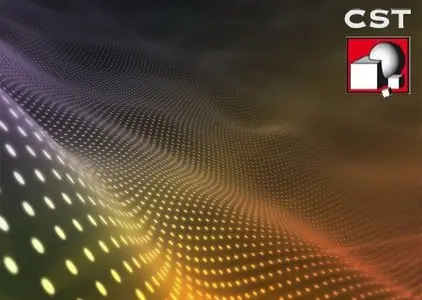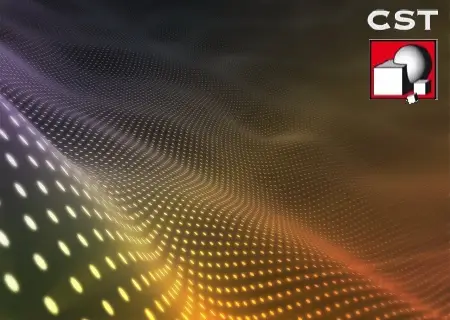CST Studio 2013 | 3.6 Gb
Computer Simulation Technology AG (CST) is pleased to announce the 2013 version of its flagship electromagnetic simulation software CST STUDIO SUITE. The result of years of research and development, CST STUDIO SUITE 2013 includes improvements and innovations at every level, from the optimized solver technology to the new Ribbon-based GUI. These advances enhance the performance, usability and versatility of CST STUDIO SUITE without compromise and guide you through complex electromagnetic systems with ease.
CST STUDIO SUITE is widely used by engineers working in fields ranging from communications and electronics to healthcare and aviation, helping them to model electromagnetic phenomena and evaluate their designs for optimal performance. Combining high-frequency and low-frequency simulation tools alongside specialized solvers for applications such as PCBs, cables and charged particle devices, CST STUDIO SUITE can be applied to many typical engineering tasks, such as EMC/EMI evaluation, SI and PI analysis, design optimization, and the tuning of antennas and filters.
The most obvious enhancement in the 2013 version is the Ribbon-based user interface. The Ribbon is centered on the standard simulation workflow, leading the engineer from set-up and modeling to simulation and post-processing. The Ribbon is supplemented by new features, including the Project Wizard and QuickStart Guide, which make the process of preparing and configuring a new project straightforward.
These changes are complemented by technological improvements behind-the-scenes. Through CST’s close collaboration with Intel, the solver code has been optimized to boost performance on the latest generation of processors.
To improve the versatility of the software, CST STUDIO SUITE also includes brand-new analysis tools, such as cylinder scans and range profile sinograms. These broaden the number of applications that the software can be used for, and allow it to slot into many different workflows easily.
General
• Ribbon based user interface
• Project wizard
• Automatic storage of parametric results
• Cylinder scan for farfields of all solvers
CST MWS transient solver
• Faster, more memory efficient mesh generation
• Kernel optimized for the latest processors
• Non-linear, frequency-dependent materials, such as Kerr and Raman materials
• More than 2 billion mesh cells
• GPU acceleration for TLM solver
CST MWS frequency domain solvers
• Curved tetrahedrons now default
• Improved mesh set-up
• Improved performance and memory efficiency
• Efficient eigenmode solver supports lossy dielectrics
CST MWS asymptotic solver
• Range profiles and sinograms for RCS
CST DESIGN STUDIO
• Improved automation for model set-up and result creation
CST PARTICLE STUDIO
• GPU support for particle-in-cell simulation
• Ribbon based user interface
• Project wizard
• Automatic storage of parametric results
• Cylinder scan for farfields of all solvers
CST MWS transient solver
• Faster, more memory efficient mesh generation
• Kernel optimized for the latest processors
• Non-linear, frequency-dependent materials, such as Kerr and Raman materials
• More than 2 billion mesh cells
• GPU acceleration for TLM solver
CST MWS frequency domain solvers
• Curved tetrahedrons now default
• Improved mesh set-up
• Improved performance and memory efficiency
• Efficient eigenmode solver supports lossy dielectrics
CST MWS asymptotic solver
• Range profiles and sinograms for RCS
CST DESIGN STUDIO
• Improved automation for model set-up and result creation
CST PARTICLE STUDIO
• GPU support for particle-in-cell simulation
About CST
CST develops and markets high performance software for the simulation of electromagnetic fields in all frequency bands. Its success is based on the implementation of leading edge technology in a user-friendly interface. CST’s customers are market leaders in industries as diverse as Telecommunications, Defense, Automotive, Electronics, and Medical Equipment. Today CST employs 210 sales, development, and support personnel, and enjoys a leading position in the high frequency 3D EM simulation market.
CST STUDIO SUITE is the culmination of many years of research and development into the most accurate and efficient computational solutions for electromagnetic designs. From static to optical, and from the nanoscale to the electrically large, CST STUDIO SUITE includes tools for the design, simulation and optimization of a wide range of devices. Analysis is not limited to pure EM, but can also include thermal and mechanical effects and circuit simulation. CST STUDIO SUITE can offer considerable product to market advantages such as shorter development cycles, virtual prototyping before physical trials, and optimization instead of experimentation.
visit my blog
Name: CST Studio
Version: 2013
Home: www.cst.com
Interface: english
OS: Windows XP / Vista / Seven
Size: 3.6 Gb
Recovery volumes or .rev files are special files which can be created by WinRAR/RAR and allow you to reconstruct missing and damaged files in a volume set. They can
only be used with multi-volume archives.
This feature may be useful for backups or, for example, when you post a multivolume archive to a newsgroup and some of the subscribers did not receive some files. Reposting recovery volumes instead of usual volumes may reduce the total number of files to repost.
Each recovery volume is able to reconstruct one missing RAR volume. For example, if you have 30 volumes and 3 recovery volumes, you are able to reconstruct any 3 missing volumes. If the number of .rev files is less than a number of missing volumes, reconstructing is impossible. The total number of usual and recovery volumes must not exceed 255 and the number of recovery volumes must be less than the number of RAR volumes.
WinRAR reconstructs missing and damaged volumes either when clicking on .rev file, or when using rc command or automatically, if it cannot locate the next volume and finds the required number of .rev files when unpacking.
You may use the "Recovery volumes" option in the Archive name and parameters dialog or a similar option also appears in the Protect archive command to create recovery volumes. In the command line mode you may do it with -rv switch or rv command.
Original copies of damaged volumes are renamed to *.bad before reconstruction. For example, volname.part03.rar will be renamed to volname.part03.rar.bad.
From Win-rar.com
only be used with multi-volume archives.
This feature may be useful for backups or, for example, when you post a multivolume archive to a newsgroup and some of the subscribers did not receive some files. Reposting recovery volumes instead of usual volumes may reduce the total number of files to repost.
Each recovery volume is able to reconstruct one missing RAR volume. For example, if you have 30 volumes and 3 recovery volumes, you are able to reconstruct any 3 missing volumes. If the number of .rev files is less than a number of missing volumes, reconstructing is impossible. The total number of usual and recovery volumes must not exceed 255 and the number of recovery volumes must be less than the number of RAR volumes.
WinRAR reconstructs missing and damaged volumes either when clicking on .rev file, or when using rc command or automatically, if it cannot locate the next volume and finds the required number of .rev files when unpacking.
You may use the "Recovery volumes" option in the Archive name and parameters dialog or a similar option also appears in the Protect archive command to create recovery volumes. In the command line mode you may do it with -rv switch or rv command.
Original copies of damaged volumes are renamed to *.bad before reconstruction. For example, volname.part03.rar will be renamed to volname.part03.rar.bad.
From Win-rar.com
All parts on filepost.com, rapidgator.com, luckyshare.net interchanged. It is added by 5% of the overall size of the archive of information for the restoration and the volume for the restoration
No mirrors please
No mirrors please



